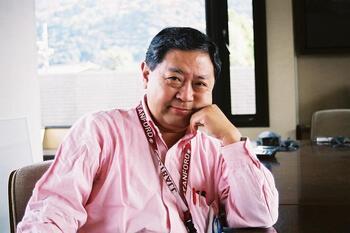US Pacific Command hosts Stanford group for Asia security dialogue
Colonel Patrick Winstead, the 2016-17 FSI senior military fellow at Shorenstein APARC, writes about the second annual orientation at U.S. Pacific Command headquarters
The mission of the Department of Defense (DoD) in the Indo-Asia-Pacific region recently became a bit clearer for 22 faculty and military fellows from Stanford, the Massachusetts Institute of Technology, the Naval Postgraduate School and the Daniel K. Inouye Asia-Pacific Center for Security Studies (APCSS). The U.S.-Asia Security Initiative at the Shorenstein Asia-Pacific Research Center (APARC) in the Freeman Spogli Institute (FSI) organized a group of faculty and fellows for a two-day orientation of United States Pacific Command (USPACOM) and its component military organizations in and around Honolulu, Hawaii, April 13-14, 2017. The purpose of the orientation was to provide researchers with a comprehensive understanding of how America’s armed forces both develop and implement U.S. national security strategy, doctrine and policy throughout Asia.
The trip began with a visit to the headquarters of USPACOM at Camp H.M. Smith. After receiving briefings about USPACOM's mission and operations, the group engaged in roundtable discussions with General Terrence O’Shaughnessy (Commander, U.S. Pacific Air Forces); Major General Kevin B. Schneider (Chief of Staff, USPACOM); Rear Admiral Mark Montgomery (Director for Operations, USPACOM); Major General Steven Rudd (Director for Strategic Planning and Policy, USPACOM); as well as other key joint directors and members of the command staff. The faculty and fellows provided short presentations on the situation in the South China Sea, U.S.-Philippine relations and cyber warfare to an audience of mid-grade military officers and civilian personnel assigned to USPACOM.
In addition to meeting with the leadership of USPACOM, the group was also afforded the opportunity to interact with personnel from the four separate component commands. Deputy Commanding General of U.S. Army Pacific, Major General Charlie Flynn, provided a command briefing at the U.S. Army Pacific headquarters at Fort Shafter. The briefing stimulated a wide-ranging discussion about Army initiatives and activities in support of USPACOM’s mission in the Indo-Asia-Pacific region. At Marine Corps Base Hawaii at Kaneohe Bay, under the guidance of trainers, the visitors took part in a hands-on experience operating Humvee simulators in a virtual-reality convoy setting and firing simulated weapons that Marines typically employ in combat operations. The first day of the trip ended with a working dinner at the historic Nimitz House with the Commander of the U.S. Pacific Fleet, Admiral Scott Swift, where the conversation ranged from Chinese military modernization to evolving U.S. naval doctrine.
Those themes carried into the second day, when the group met for several hours with faculty at APCSS for plenary presentations and multiple breakout sessions to facilitate in-depth dialogue on select topics including the threats posed by nuclear weapons on the Korean Peninsula and in South Asia. The day continued with a tour of the U.S.S Hopper, an Arleigh-Burke class guided missile destroyer, based at Pearl Harbor, Hawaii. Once onboard, the ship’s captain, Lieutenant Commander J.D. Gainey, provided briefings on Hopper’s mission and operational capabilities. In addition, the group spoke with members of the ship’s crew. The experience allowed the faculty and fellows to interact informally with sailors who serve in the Asia-Pacific theatre and to candidly discuss issues of concern. The second day of the orientation ended with a visit to the headquarters of U.S. Pacific Air Forces and a dialogue with O’Shaughnessy and his staff about the unique security challenges of the Indo-Asia-Pacific region, such as tyranny of distance, limited support bases and multiple emerging threats, and how those challenges impact the Air Force and the entire U.S. military’s preparations for contingencies in the region.
Overall, the orientation provided a unique opportunity to engage directly with high-level leaders of USPACOM and to learn first-hand about the challenges faced by those who serve in the armed forces. The orientation also provided a forum to discuss the United States’ national security interests in the region and its efforts to maintain peace and stability in the Indo-Asia-Pacific and to help maintain a rules-based, liberal democratic order.
Related links:




